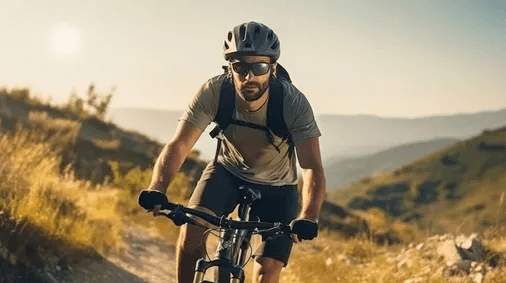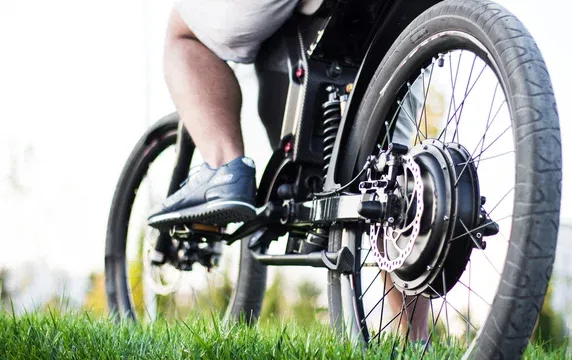Electric bikes, or eBikes, are revolutionizing the way people commute, exercise, and explore their surroundings. With various models, such as the sports model electric bike and the Class 3 eBike, consumers have more choices than ever. However, a common question arises for many prospective buyers: "Are eBikes street legal?" In this article, we'll explore the different regulations surrounding eBikes, particularly Class 3 models, and dive into how street legality varies by country and region. This guide will also provide tips on maximizing the benefits of your eBike while staying compliant with the law.
What Are the Different Classes of eBikes?
Before diving into the legality of electric bikes, it’s crucial to understand the different classes of eBikes. Regulations surrounding eBikes often depend on their classification, which is determined by the bike’s speed, motor power, and level of pedal assistance.
Class 1 eBikes
A Class 1 eBike provides pedal assistance but does not have a throttle. The motor kicks in only when the rider is pedaling, with a maximum speed of 20 mph. These bikes are often allowed on bike paths and in parks where regular bicycles are permitted.
Class 2 eBikes
Class 2 eBikes come equipped with a throttle, which allows the rider to operate the bike without pedaling. Like Class 1, their speed is limited to 20 mph. However, the inclusion of a throttle can change where these bikes are allowed, depending on local regulations.
Class 3 eBikes
A Class 3 eBike, also known as a speed pedelec, offers pedal assistance and can reach speeds up to 28 mph. This makes Class 3 models ideal for commuting and sport riding, such as a sports model electric bike, but it also means they are subject to more stringent regulations due to their speed and power.
Are eBikes Street Legal?
The answer to the question, "Are eBikes street legal?", depends largely on where you live and the type of eBike you're riding. Let's take a closer look at the regulations in key regions.
eBike Street Legality in the United States
In the U.S., federal law classifies eBikes as bicycles as long as they meet certain conditions: they must have fully operable pedals, an electric motor of 750 watts (1 horsepower) or less, and a top speed of 20 mph when powered solely by the motor.
However, state laws vary significantly. Most states allow Class 1 and Class 2 eBikes on streets and bike paths without additional requirements, but Class 3 eBikes are often treated differently. Due to their higher speed (up to 28 mph), Class 3 models are typically restricted to roads and are not always allowed on bike paths or sidewalks. Riders may also be required to wear helmets and meet age requirements, which can vary by state.
eBike Regulations in Europe
In Europe, the rules for electric bike street legality are stricter. According to EU regulations, eBikes with a motor assistance limit of 25 km/h (15.5 mph) and a motor output of no more than 250 watts are classified as bicycles. These bikes can be used on public roads and bike paths without any special registration or insurance.
For faster eBikes, like a Class 3 eBike, regulations differ. These models, often referred to as "speed pedelecs," are treated more like mopeds in many countries. Riders may need a license, insurance, and registration, and speed pedelecs are often banned from bike lanes. Helmet use is also mandatory for these higher-speed models.
Street Legality in Other Countries
In Canada, the rules surrounding eBikes are fairly lenient. For an eBike to be considered street legal, it must have pedals, an electric motor not exceeding 500 watts, and a top speed of 32 km/h (20 mph). Class 3 eBikes may have different restrictions depending on the province, so it’s important to check local laws.
Australia takes a similar approach, classifying eBikes with a motor output under 250 watts and a maximum speed of 25 km/h (15.5 mph) as bicycles. However, higher-powered models, like sports model electric bikes, may require additional licensing and are treated more like motorized vehicles.
Can Class 3 eBikes Be Used on Bike Paths?
One of the most frequently asked questions when it comes to eBikes is, "Can Class 3 eBikes be used on bike paths?" The answer is largely dependent on local laws and regulations.
In the U.S., most states prohibit Class 3 eBikes from bike paths and multi-use trails because their speed can pose safety risks to other cyclists and pedestrians. However, there are exceptions. For instance, some states allow Class 3 models on bike paths that are adjacent to roads but not on standalone recreational trails. Always check local laws to ensure compliance when riding a Class 3 eBike.
In Europe, the use of Class 3 eBikes on bike paths is typically not allowed, with these models restricted to roads. Speed pedelecs are often treated as motorized vehicles, meaning they must adhere to road traffic rules.
How to Ensure Your eBike is Street Legal
Ensuring that your eBike is street legal comes down to understanding the specific laws in your region. Here are some general tips to keep your eBike compliant with street regulations:
1. Choose the Right Class
If you plan on riding in areas where bike paths are common, opting for a Class 1 eBike might be the safest bet. These bikes are widely accepted on most paths and trails, making them ideal for recreational riding.
2. Follow Local Speed and Power Limits
Different regions have varying speed and power limits for eBikes. For example, while sports model electric bikes may have high-performance features, it’s important to ensure that the motor power and speed stay within local legal limits.
3. Equip Your eBike with Required Accessories
Some regions may require additional accessories for street legality, such as lights, reflectors, or even a horn. Always double-check your local regulations before heading out on the road.
4. Obey Helmet and Age Laws
For higher-speed models like Class 3 eBikes, helmet use is often mandatory, and riders may need to be of a certain age to operate the bike legally. Always comply with these safety regulations to avoid fines and ensure your protection on the road.
Why Class 3 eBikes Are Ideal for Commuters
With their increased speed and power, Class 3 eBikes are becoming a popular choice for commuters. Not only do they provide an eco-friendly alternative to driving, but they also offer a faster and more efficient way to navigate city streets compared to traditional bicycles.
A sports model electric bike, for example, can make your daily commute more exciting while reducing travel time. With speeds up to 28 mph, you can easily keep up with traffic in urban areas, making Class 3 eBikes a smart investment for those looking to cut down on commuting time while staying active.
Conclusion: Ride Legally and Efficiently with MOVCAN
In summary, ensuring that your eBike is street legal depends on understanding local regulations, especially when it comes to faster models like Class 3 eBikes. By choosing the right type of eBike and adhering to the speed, power, and safety requirements in your region, you can enjoy a smooth, hassle-free ride. Whether you're commuting, exercising, or simply enjoying the outdoors, electric bikes provide an eco-friendly and efficient transportation solution.
At MOVCAN, we offer a range of high-quality sports model electric bikes and Class 3 eBikes that combine performance, style, and compliance with local laws. Our eBikes are designed for riders who demand both speed and safety, with advanced features that cater to commuters and outdoor enthusiasts alike. With MOVCAN, you’ll get the best of both worlds—legal street riding and top-tier performance. Explore our selection today and discover the perfect eBike for your journey!





Share:
Why Does My eBike Make a Clicking Noise?
Can You Drive an Electric Motorcycle Without a License